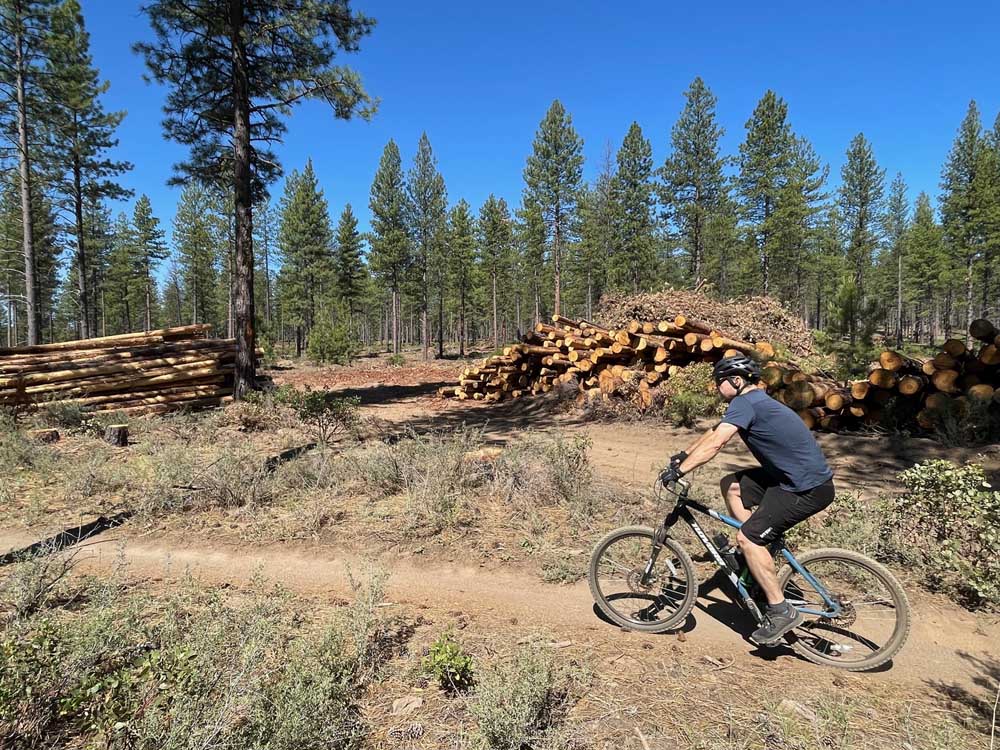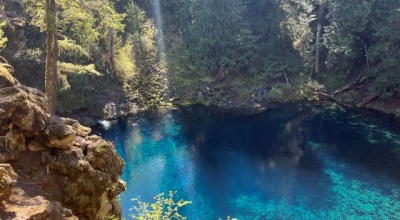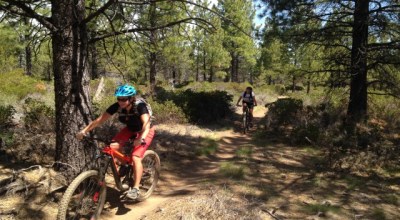Dusting off your mountain bike trail etiquette for spring riding
Published 4:30 am Friday, May 3, 2024

- Tony Barnes of Vancouver, Washington, rides Phil's Trail past some logs near the end of a long mountain bike in July 2023.
Spring has sprung and so have the mountain bikers on the trails. As we dust off the mental riding dust, check our PSI and lube our chains to be ready for the season, this is a great time to refresh single track etiquette.
If we all agree to these principles, we should keep access to and have positive encounters with others on the trails.
Yield to uphill riders
When encountering other bikers on the trails head on we yield to the uphill riders. This can get tricky on many trails in our area because they are nearly flat or gently rolling, so two riders may each feel they are the uphill traveler. If the other rider appears a novice or is struggling, help them out by yielding the trail. If the patch of trail you are on is easy to move to the side of, pull over there and let the other rider through. When you encounter a big group just pull over and let all of them pass. It’s easier to ride around one or two riders than 30, though giant groups could be more respectful of others experiences by breaking into smaller groups.
When in doubt, yield. If a rider yields for you, smile and say thank you.
Please pass with patience
When overcoming another biker, take a big breath and be patient. They may not have heard you catch them through their heavy breathing or squeaky drive train, so use your words or bell to let them know you are behind them. I like to refer to racing etiquette in these situations. The overcoming rider is the more advanced, more fit or more motivated rider, and therefore it’s their responsibility to safely and respectfully pass the rider. Do not pass them in a manner where they will be pushed off the trail or whacked by your handlebars. If the trail is crossing a slope, pass the rider on its downhill side so if the other rider gets nervous and wants to put a foot down, they can do so easily on the uphill side of the trail.
If you’re the rider being overcome, you do not need to immediately stop, but do communicate to the rider trying to pass that you are looking for a spot to let them do so. A little communication can go a long way to make passes quick, safe and not frustrating.
Keep off the grass
When you do pull over for another rider, try not to ride on or step on vegetation. There is usually a wide spot where you can put a foot down and lean your bike away from the trail so the rider can pass. Riding off trail for a pass damages vegetation and soil and leads to trail widening. Speaking of sensitive vegetation: When there is a puddle, ride through it, not around it. Going around widens trails and creates a lot of work for Central Oregon Trail Alliance volunteers to fix.
Who yields to whom?
Bikes yield to all other trail users. However, if the other trail user jumps off the trail in a friendly gesture, ride through. Motos, ATVs and the like should yield to you, but I would not recommend pressing the issue, it may be easier for you to move out of the way than the other way around. Keep in mind many motorized trails are closed to non-motorized users, so check before you explore that motor trail on your mountain bike.
Coming up on horses is a situation where most mountain bikers are unsure of what to do. Kim McCarrel, the public lands liaison for the Central Oregon chapter of Oregon Equestrian Trails, recommends this: “If a bicyclist meets a horseback rider on the trail, they can keep everyone safe by stopping as soon as they see the horses, and talking with the equestrian to find out the safest way to pass each other. I know bikes are supposed to yield to horses, but that doesn’t mean they must get off the trail for horses. Sometimes it’s easier and safer for the horse to step off the trail. Either way, the cyclist will score big points with the horseback rider if he asks for the equestrian’s opinion about the safest way to pass.”
Good stewardship
Finally, to be a good trail steward all you have to do stay on the trail and leave it how you found it. Don’t short cut corners. If a trail obstacle is not for you, walk over it instead of riding around it. If it is muddy enough that you are sinking in and leaving a trench, go ride somewhere else.
Riding closed, unsanctioned or private trails only irritates the land manager and threatens access to the area so don’t ruin it for everyone for that one sweet July run down Flagline, when it’s closed for elk calving until Aug. 15. Pack out what you packed in or maybe a little bit more.
It takes so little to ensure everyone has a positive trail experience when we meet. When in doubt, yield it out.
Dropping In: Trail manners matter more than ever in Central Oregon
More Biking






